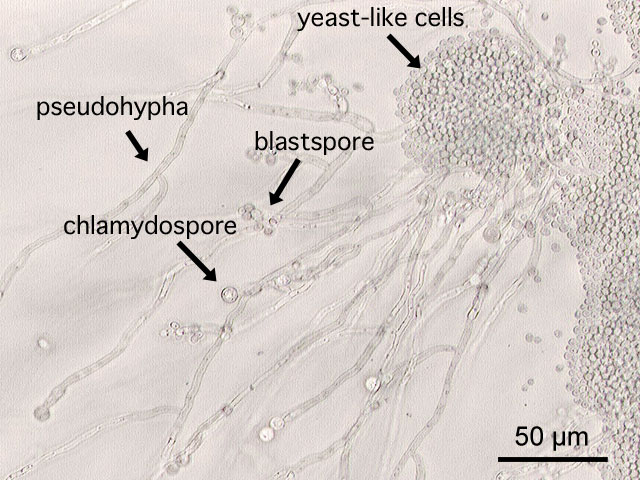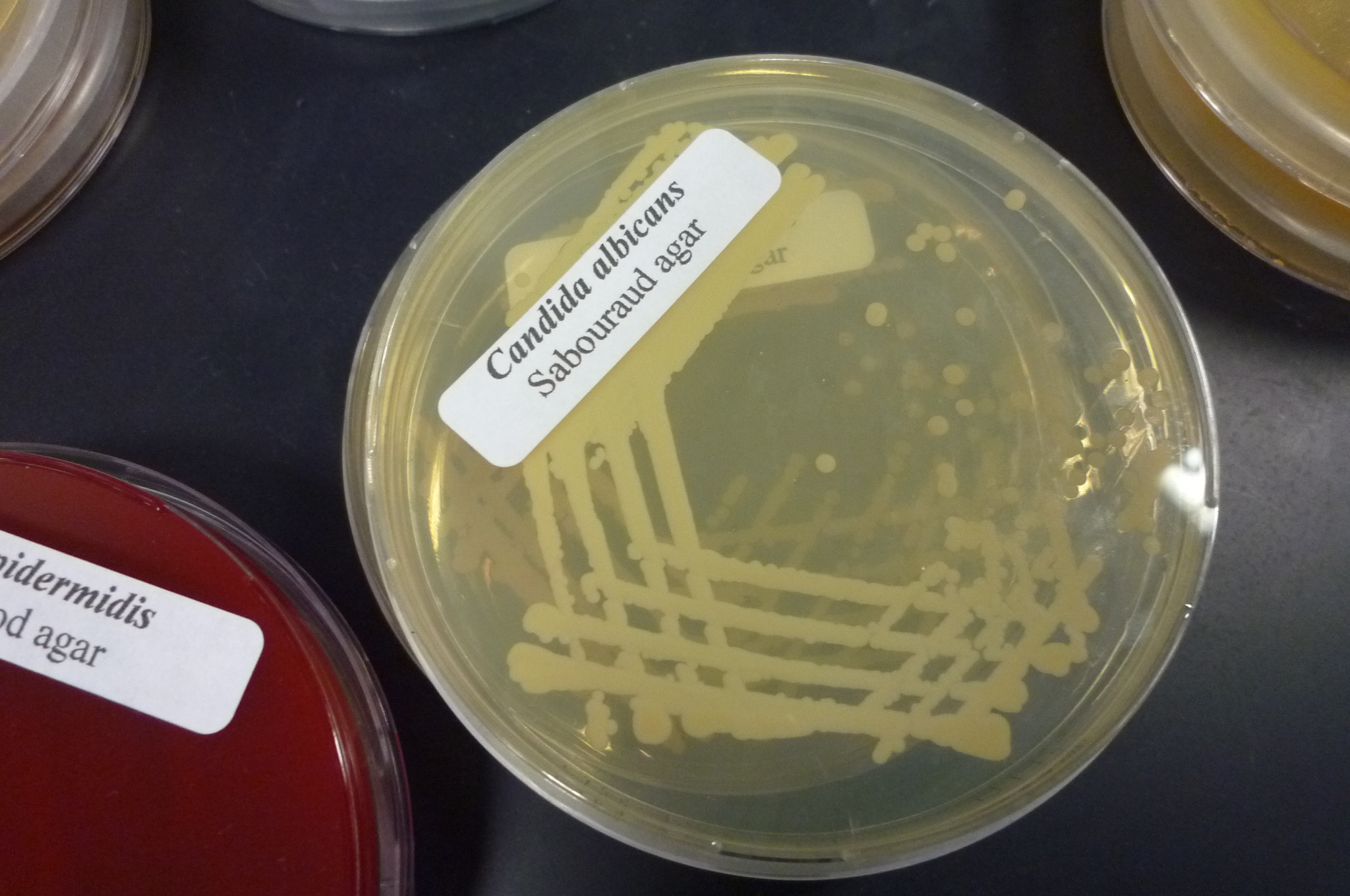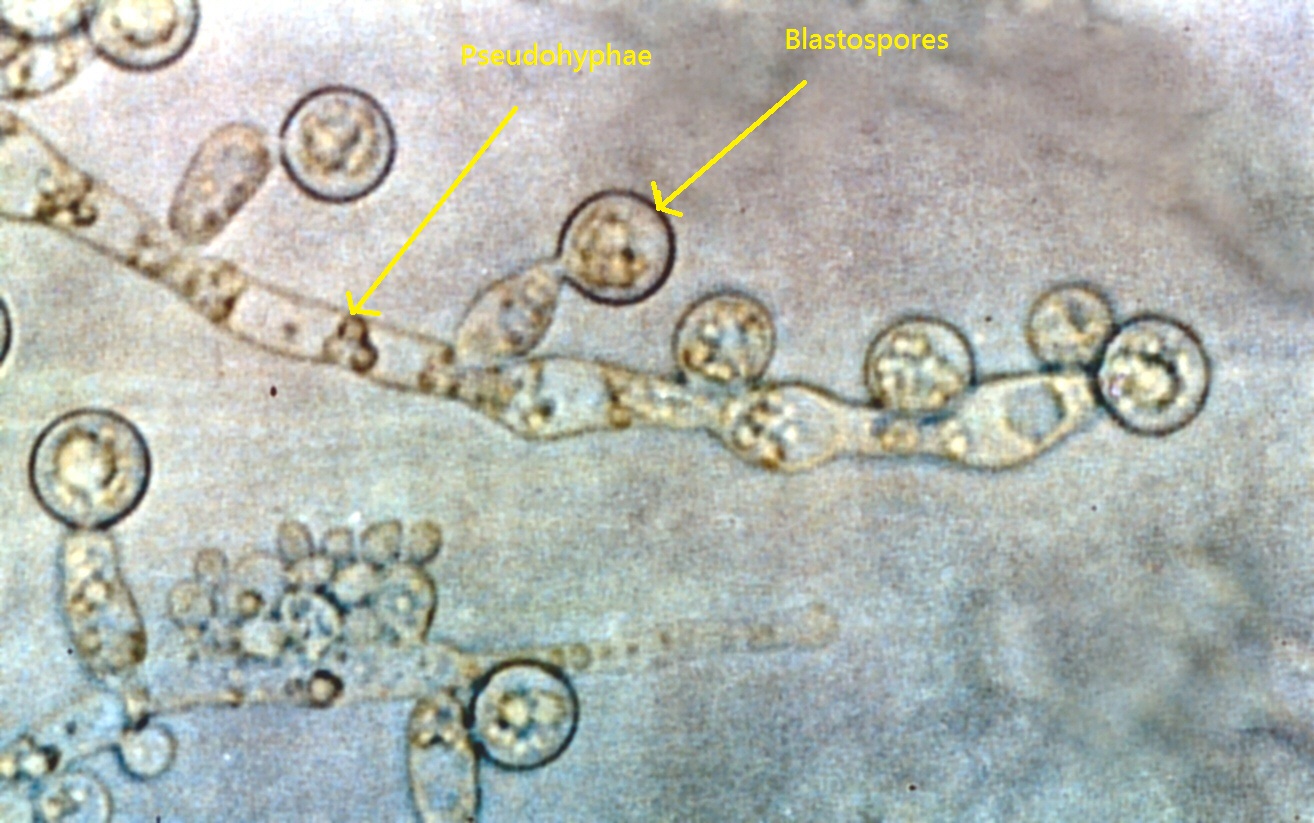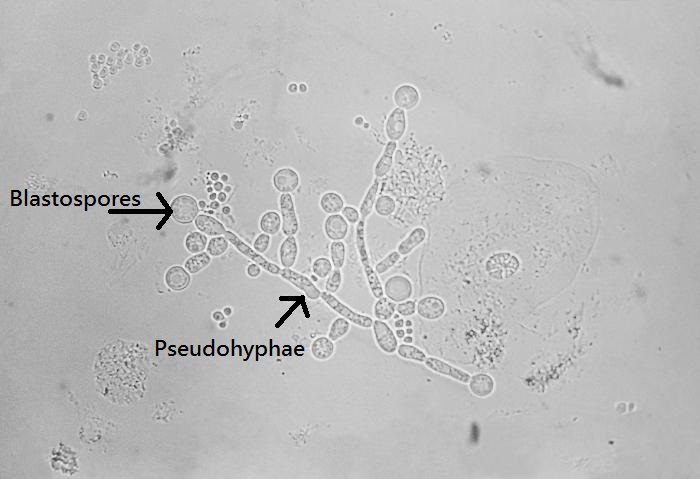Esophageal candidiasis laboratory findings
|
Esophageal candidiasis Microchapters |
|
Diagnosis |
|---|
|
Treatment |
|
Case Studies |
|
Esophageal candidiasis laboratory findings On the Web |
|
American Roentgen Ray Society Images of Esophageal candidiasis laboratory findings |
|
Risk calculators and risk factors for Esophageal candidiasis laboratory findings |
Editor-In-Chief: C. Michael Gibson, M.S., M.D. [1];Associate Editor(s)-in-Chief: Ahmed Younes M.B.B.CH [2]
Overview
Although the appearance of the patches during endoscopy is diagnostic for esophageal candidiasis, biopsies should be obtained to confirm the diagnosis. If the patient is not already diagnosed with HIV or another immunocompromising disease, screening should be done.
Laboratory findings
Microscopic candida examnination
Both smears and biopsies can be stained by periodic acid Schiff stain which stains the walls of the fungi red. Candida also can be stained using gram stain (strongly gram positive)[1]
 |
 |
|---|---|
 |
 |
HIV screening in esophageal candida patients
Patients having esophageal candidiasis should be screened for the presence of HIV infection:
Screening Tests
Most HIV tests used to screen for HIV infection detect the presence of antibodies against HIV. Detectable antibodies usually develop within 2–8 weeks after infection, but may take longer. There are three different screening tests:
- ELISA test (based on antigen-antibody and enzyme substrate reactions).
- Rapid Tests (Dot blot and Latex Agglutination Tests).
- Simple Tests (Particle agglutination tests).
Both simple and rapid tests are readily available and cheaper as compared to ELISA although they may not be as sensitive.
Supplemental Tests
These are used to validate results obtained by the screening tests and are of two types:
- Western blot tests
- Immunofluorescence tests
Confirmatory Tests
These test aim at the following:
- Demonstration of viral Antigen (P24).
- Isolation of HIV.
- Detection of viral nucleic acid.
References
- ↑ Kumaraswamy KL, Vidhya M, Rao PK, Mukunda A (2012). "Oral biopsy: oral pathologist's perspective". J Cancer Res Ther. 8 (2): 192–8. doi:10.4103/0973-1482.98969. PMID 22842360.